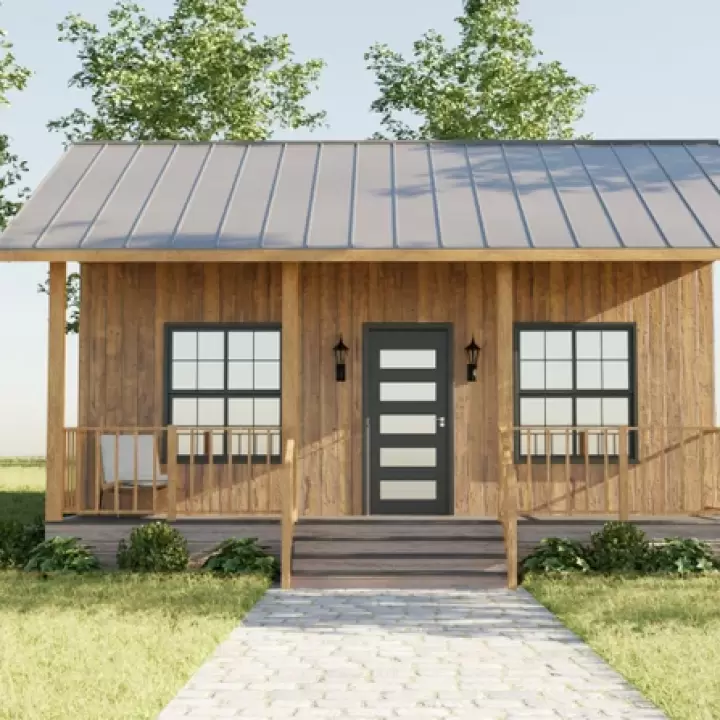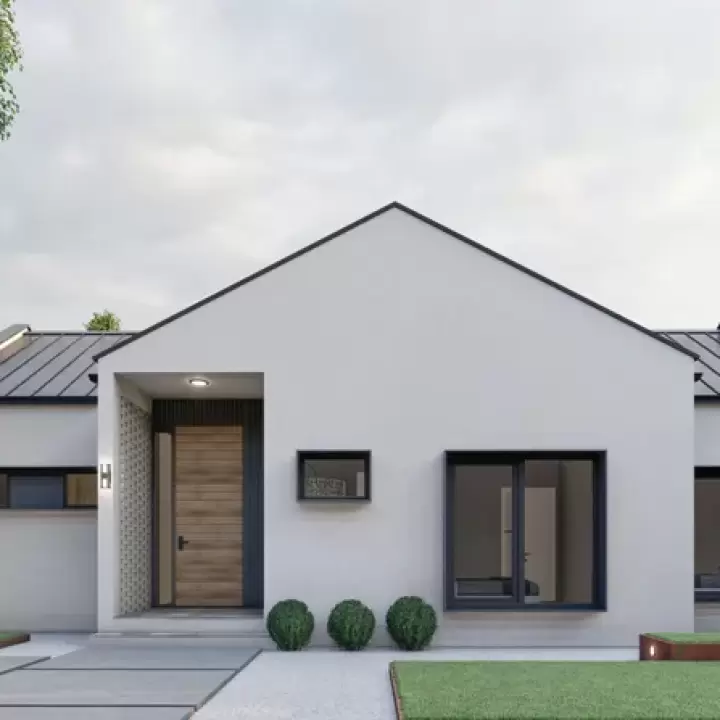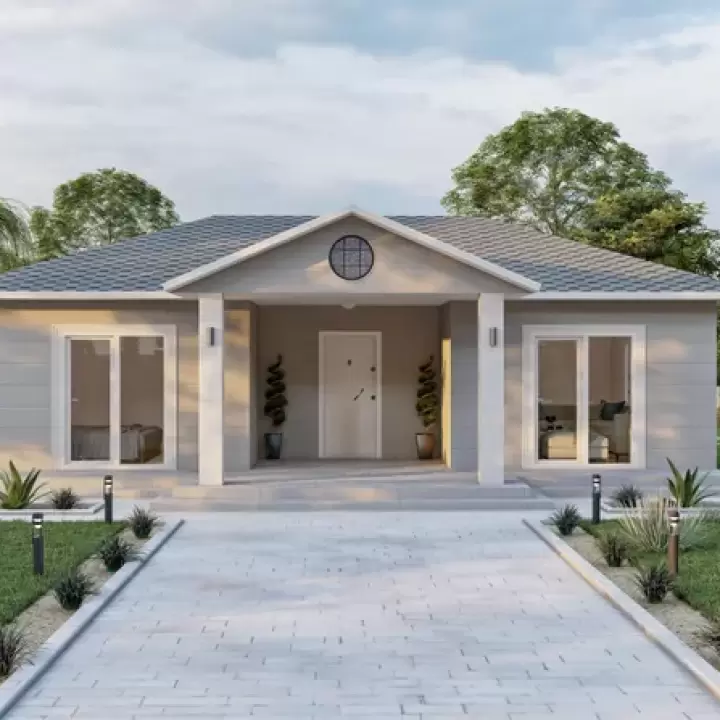
Prefab A-Frame Kits The Ultimate Guide to Customizing Your Dream Home
Prefab A-frame kits offer a unique combination of style, efficiency, and simplicity, making them an attractive choice for many homebuyers. Whether you're seeking a cozy retreat in the mountains or a sleek modern residence, these kits provide an excellent foundation for creating your dream home. In this comprehensive guide, we'll explore everything you need to know about prefab A-frame kits, including their benefits, customization options, and tips for making the most of your project.
What is a Prefab A-Frame Kit?
A prefab A-frame kit is a pre-manufactured package of materials designed for constructing an A-frame style house. The A-frame design is characterized by its distinctive triangular roofline that extends to the ground, creating a unique and visually striking structure. Prefabrication means that many components of the house are built off-site in a factory, allowing for quicker assembly and often reduced costs compared to traditional construction methods.
Benefits of Prefab A-Frame Kits
Prefab A-frame kits offer numerous advantages:
- Cost-Effectiveness: By manufacturing components in bulk and assembling them on-site, prefab kits often reduce overall construction costs. This cost efficiency can make owning an A-frame home more accessible.
- Speed of Construction: Prefabricated components streamline the building process, allowing your home to be completed faster than with traditional methods. This is especially beneficial if you're looking to move in quickly.
- Design Flexibility: Many prefab A-frame kits come with customizable options, allowing you to tailor the design to your preferences. From interior layouts to exterior finishes, you can create a home that reflects your personal style.
- Energy Efficiency: A-frame designs are naturally energy-efficient due to their sloped roofs and triangular shape, which helps in maintaining optimal temperature and reducing heating and cooling costs.
- Sustainability: Prefab construction is often more eco-friendly, as it minimizes waste and reduces the environmental impact associated with on-site building.
Customizing Your Prefab A-Frame Kit
Customizing your prefab A-frame kit allows you to create a home that meets your specific needs and preferences. Here are some key areas to consider:
1. Design and Layout
While prefab A-frame kits come with a standard design, many manufacturers offer various layouts and design options. Consider the following:
- Size and Floor Plan: Choose a floor plan that suits your lifestyle. Options range from compact, cozy designs to larger homes with multiple rooms and open living spaces.
- Number of Floors: Decide whether you want a single-story A-frame or a multi-story design with additional living space.
- Windows and Doors: Select window and door styles that enhance natural light and complement your design. Large windows are a hallmark of A-frame homes and can offer stunning views of the surrounding landscape.
2. Interior Finishes
Customization extends to the interior of your home, where you can select:
- Flooring: Choose from a variety of flooring options, such as hardwood, laminate, or tile, to match your style and functionality needs.
- Wall Finishes: Opt for paint, wallpaper, or wood paneling to create the desired aesthetic.
- Kitchen and Bathroom Fixtures: Select fixtures, cabinetry, and countertops that align with your vision for the space.
3. Exterior Finishes
The exterior of your A-frame home is just as important as the interior. Consider:
- Siding Materials: Options include wood, metal, or vinyl siding, each offering a different look and level of maintenance.
- Roofing: Choose a roofing material that complements the A-frame design and provides durability against the elements.
- Landscaping: Incorporate landscaping elements that enhance the overall appearance and functionality of your home’s exterior.
4. Energy Efficiency and Sustainability
Maximize the efficiency of your A-frame home with:
- Insulation: Invest in high-quality insulation to keep your home comfortable year-round and reduce energy consumption.
- Energy-Efficient Windows: Install windows with low-E coatings to improve energy efficiency and comfort.
- Renewable Energy Sources: Consider incorporating solar panels or other renewable energy sources to further reduce your environmental footprint.
Tips for a Successful Prefab A-Frame Project
- Choose a Reputable Manufacturer: Research and select a manufacturer with a solid track record and positive reviews. Ensure they offer the customization options and support you need.
- Plan Thoroughly: Work with an architect or designer to plan your layout and design. Ensure all aspects of your home meet your needs and preferences before finalizing your order.
- Check Local Regulations: Verify that your prefab A-frame kit complies with local building codes and regulations. This will help avoid any issues during construction.
- Prepare Your Site: Ensure your building site is properly prepared and equipped to accommodate the prefab components. This includes having a suitable foundation and access for delivery and assembly.
- Budget Wisely: Factor in all costs, including customization options, site preparation, and additional features. Having a clear budget will help keep your project on track.
FAQ
1. What is the average cost of a prefab A-frame kit?
The cost of a prefab A-frame kit can vary widely based on size, design, and customization options. On average, prices range from $50,000 to $150,000, not including site preparation and additional expenses.
2. How long does it take to assemble a prefab A-frame home?
Assembly time depends on the complexity of the design and the experience of the builders. On average, it takes between 4 to 12 weeks to complete the assembly of a prefab A-frame home.
3. Can I customize the floor plan of a prefab A-frame kit?
Yes, many manufacturers offer customizable floor plans, allowing you to adjust the layout to fit your needs and preferences.
4. Are prefab A-frame kits energy-efficient?
Prefab A-frame homes are generally energy-efficient due to their design. Features like sloped roofs and high-quality insulation contribute to reduced heating and cooling costs.
5. What maintenance is required for a prefab A-frame home?
Maintenance requirements depend on the materials used and the local climate. Regular checks on roofing, siding, and insulation are recommended to ensure the home remains in good condition.
By following this guide and considering these tips, you can successfully create a prefab A-frame home that perfectly suits your needs and style. Enjoy the process of customizing and building your dream home with the convenience and efficiency of a prefab kit.




